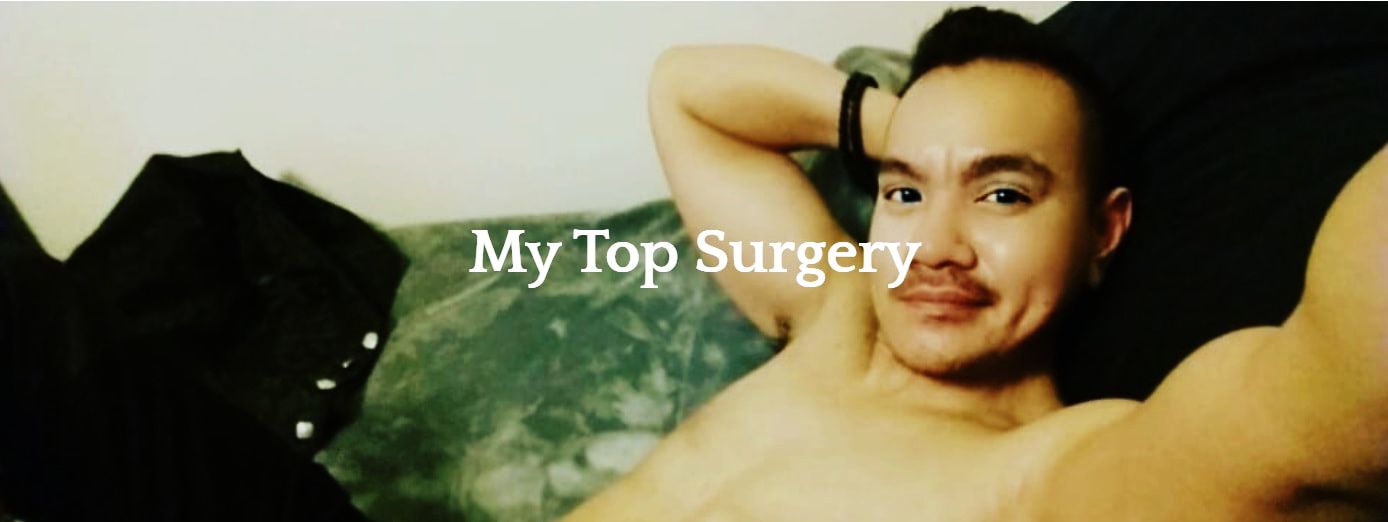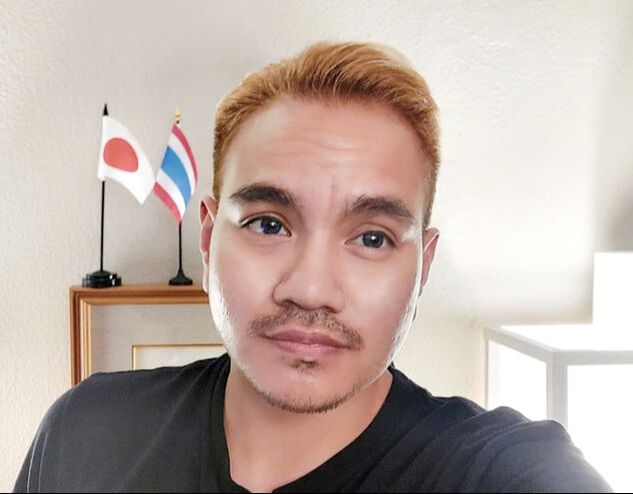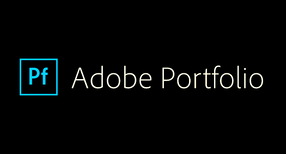|
December 18, 2019 on a Wednesday at 7:30 am was the official appointment and arrival date for my top-surgery, which is basically the removal of all breast tissue, reconstruction, and masculinization of the chest for transmen. In medical terms the procedure is called a double mastectomy. If you have read My Transgender Story blog, which recounts my early years before coming out as transgender, you will learn that I have dealt with a rather traumatic sexual abuse revolved around being born AFAB (assigned female at birth) with breasts specifically with nipples. It was so traumatic for me that I have chosen to not have any nipples for my top surgery procedure. Although, that dark part of my life is forgiven, the memory of that is not forgotten.
Every trans guy most likely has had a different method of health insurance or funding to undergo top surgery, to their surgeon, to their own unique and personal experience, to their medical procedure, to their outcome of their healing results, and to their everlasting permanent physical appearances according to their preferences. When it comes to physical appearances, like figure, physique, body height, shape, and weight, even genetics, each trans guy undergoing top surgery will choose one of the various procedures to best fit their top surgery postoperative body goals which determines the ending results starting from their preface to post operation moments. Since there are various options to the surgery procedure which I will not discuss here because that's a whole other large topic. However, for some who are either just beginning their hormonal transition journey or for those who are getting ready to take the extra step into the medical part of their transition, it may take some time to contemplate and even do some careful research before giving it a go. Just a bit of fair warning, you will need a lot of strength, both, body and mind, and a lot of support from family and friends that of which you can fully trust. However, this will be my top surgery experience and therefore I must disclose that some other people’s experiences will be my inexperience and vice versa, which makes every top surgery procedure and experience rather unique to every individual who has undergone top surgery throughout their transgender lifetime. Lest not forget those who choose never to undergo top surgery which is completely fine. Surgical procedures are one of choice. However, being born transgender is not! Who was my top surgeon of choice? I've heard of so many top surgeons out there and very few stood out like Dr. Scott Mosser, who seems to be very popular and well-known around the San Francisco Bay Area for his surgical procedures and results but the reason why I didn't choose to go for him was because I didn't have the health insurance required for his clinic to accept my procedure. My health insurance was with Kaiser Permanente, so instead, I choose Dr. Roderick Simonds, and although unknown to the public, I like the fact that he keeps confidentiality with his patients and I only saw one review and results of a patient he had through Imgur. I know that photos of results speaks volumes but I like a bit of an enigma so Dr. Roderick Simonds was my plastic and reconstructive surgeon of choice through Kaiser Permanente. I had chosen him after finding him on a Reddit review, initially by the same transgender man on Imgur who had his top surgery done. After a few appointments discussing the top surgery procedure with him, I felt that he listened to what I needed and wanted. He has done several top surgery procedures before for transmen and he made me feel like he understood and cared about the preparing before, the recovery during, the aftercare, and the results afterwards. I first requested to know more about top surgery at Kaiser Permanente by asking my healthcare physician Dr. Ian Matthew Fellows, MD. who first referred me to the Gender Pathway Clinic through their Transgender Services programs where I must first go through a psychiatric mental health screening evaluation with Carlos Morales, therapist. They then referred and booked me with Dr. Roderick Simonds and on the first day of meeting with him, he examined me at first to determine the size then discussed the surgical options of the procedure. I could have done keyhole, but the keyhole would not have guaranteed that all the breast tissue would be removed. Next option was a small double incision below the nipple. I firsthand told Dr. Simonds that I may not want to keep the nipple at all because I was thinking of getting a shoulder sleeve and chest body tattoo to cover up the scars after it fully heals anyway. On the first meeting, it was just a pre planning of my top surgery and then figuring out the actual date of the operation. According to my health record history of anemia and low iron count, I was instructed to stop smoking preferably three months before, but since I only had less than month to quit because of the surgery date being moved up, I end up quitting cold turkey four weeks before the surgery. I also couldn’t drink orange juice or milk. How did I prepared for my top-surgery? Preparing for my surgery post operation was like evaluating everything by placing the most used daily essentials down to waist level. However, trying to get my mother to understand that I couldn’t reach the cups, dishes, condiments, etc. in the kitchen was not something I would be able to do. They didn’t take me seriously. I end up having to gather the essentials and store them at waist level in my own recovery area. Don’t buy anything you have to open with your two hands like bottled Gatorade or anything that is airtight sealed by a twist off cap because you will end up straining yourself, instead get canned drinks or drinks that contains a straw like juice boxes. Same when it comes to food. Unless you have a an able muscled person to open airtight sealed twist off caps or a four star Michelin chef that cook a meal for you every day, stock up on microwavable foods. On the night before of the procedure, I had to use these medical wipes to wipe down my entire body and stop eating solid foods for 8 hours. When it came down to 2 hours before my arrival time for surgery, I had to drink a clear fast liquid and can only eat and drink clear liquids like water, coffee (no cream), and broth. This is important for the surgical procedure because I learned that if you eat solid food or drink any liquid 2 hours before you go into surgery, you could aspirate or choke which affects the breathing tube that goes down your throat to help you breathe while you are under anesthetic. Basically, when you are laying flat with your head tilted back due to a breathing tube down your throat, if there is any food or liquid in your stomach, that food or liquid can go back up to your esophagus like vomit creeping up in the back of your throat which is why you are advised to not eat solid foods or drink any liquids 2 hours before your actual surgery operation. How was my top-surgery procedure and aftercare? I was given some medication to help me relax a few hours before the actual surgery procedure. When it was time, the moment they placed the anesthesia gas over my face, I was out before I knew it. When I woke up, I felt really numb but very dizzy. It took me maybe between two to fours hour of rest at the recovery ward for me to be able to actually move about carefully and be discharged. Once I got home, I went to take a long nap after eating some ice cream to soothe my sore throat because of the tube being down my throat during the surgery. They have medical tape over my incision wound and a medical binder that I am to wear for 2 months to keep down both the swelling and compress the chest as it heals. I can only take it off for 15-20 minutes but no more than 30 minutes. I could also wear clothes underneath the binder so I could be more comfortable. I had to sleep with my chest and head a bit elevated and not to sleep on my side or back. I have been instructed not to reach above wait level at all. I can't shower for 2 days so I would have to do a dry shower which is basically body wipes. I was prepared for this so I bought myself a full case of Dude Wipes. After 2 days, I am to only shower, no bathes, and during the shower, I am to let the water hit my back instead of having it hit straight onto the wound soaking or getting it all soaking wet. I am to allow the water to roll behind my back down to the wound where the medical tape is protecting it. I'm to take a shower this way for 3 weeks and only use a mild soap to wash around the wound where the medical take is protecting it. After my showers, I am to pat dry with a clean towel and not to rub on and around the wound. In the next few weeks to come during my three and a half week FMLA leave of absence from my job, it was more about getting around the house and taking care of myself. Not to mention, it was around the holidays and Christmas was around the corner which was a time well spent with family. The pain was very minimal due to the fact that the anesthesia was slowly wearing off and I was already taking pain killers in advance to manage any pain. I lost nerve feeling around the chest area for awhile and I was told that within 6 months to about a year, the nerves will grow and heal itself along with the tissue and the skin. I didn't get stitches, instead, there are layers of sutures inside in which I was told that my body will eventually absorb it. Although, I lost feeling, I was also told that I would get some feeling back. During the 3 weeks of my healing stages, these were the sensations that I have felt after the surgery. There was a whole lot of prickling, popping, clunking noises, and muscles spasms happening all within the chest area. There were moments when certain areas around the incision felt very stiff and tender which was normal because my body was healing itself up. I honestly do not know how to explain the stages of how large wounds heal itself up but I did see a video of one and it's amazing! My chest didn't begin to feel any soreness until after maybe 4-6 weeks. The harder part was being mindful that I could not reach upwards above waist level or lift anything beyond 10 lbs at all because this would tear the sutures inside or cause more damage to my chest wound. After about half a week from my surgery, I did attend a follow-up visit care with the nurses and doctors at Kaiser Permanente to examine the surgical site to monitor any sign for infections and attain further aftercare instructions. Some of the questions I had was if I could ice or heat treat the wound. The nurse advised not to because ice or heat causes moisture and that builds bacteria and may create an infection. The wound must stay dry while the medical tape is in place. However, the medical tape will eventually peel away on it's on and loose its adhesiveness so when it does, she advised that I can carefully ship them away. She wanted me to heal really nicely and have a nice clean scar so she told me absolutely not to peel it off. She gave me some fresh dressings so I can undress the bandages and change new ones once the old ones are soiled and a sterile bandage roll instead of a binder so I can have a bit more flexibility and breathability around the chest. I can then alternate between the binder and the bandage roll. In the 2 weeks of rest and recovery, I was bored out of my mind and became restless and began doing stupid shit like dusting and dishes. If you ever get the urge to be active like this, just do yourself a favor. don't. Sit your butt back down, watch some Netflix, play some video games, or read a book because being too active with your arms might aggravate your chest and there will be sprinting pain. About 2 and a half weeks from my surgery, I attended a follow-up care with Dr. Simonds where he was going to inspect the surgical site and give me further instructions for aftercare. This was a moment where he took off the medical tape that was slowly peeling away which I cuts parts off of already. He took it off with a snap of a finger and I saw the surgical incision for the first time. I was scared at first but after looking at it I was like huh, it's not so bad. He then took some wound safe medical tape adhesive remover with some sterile cotton balls and rubbed it across my incision site, it felt sensitive, tender, and sore. The left corner of the incision on my chest did bleed a bit so Dr. Simonds placed a band-aid on that. Dr. Simonds instructed me to get some Vaseline petroleum jelly in which once my medical tape gets removed, I am to apply and when I'm comfortable enough to give it a good rubbing to help reduce scarring and promote the wound to heal faster. He also told me that I don't need to cover up with the dressing anymore and I can just wear the binder or the bandage roll. Dr. Simonds also advised to not get a tattoo yet until after about a year. He also requested that I send him photos once I do get my tattoo done in which I look forward to doing so when that time comes. So am I satisfied with my top-surgery results? The answer is yes. It has been a dream of mine to be able to take my shirt off especially on hotter than normal weathers and this lessens my dysphoria by a long mile. It's also freedom and a more truer image of my trans male body so with this being said and done, I now consider myself to be a transexual man. Once I am all healed up, I know I am going to be one handsome guy. My body goals after my top-surgery is body building. Stay tuned till then. I know I have more transformation to work on and this is only the beginning of living in my new transexual male body.
0 Comments
|
AuthorKaneda Yoshida (male pronouns: he/him/his) is a transgender (FTM) who blogs about his life's journey and experience as a transgender (FTM). Archives
December 2023
Categories
All
|
- Home
- About
-
Services
-
KYOSHIDA Photography & Graphics Design
>
- Professional Photography Service Package >
- Special Events Photography Service Package >
- Website Design Service Package >
-
Graphics Design Service Package
>
- Custom Logo Design Gallery
- Custom Frame Design Gallery
- Custom Word & Font Design Gallery
- Custom Banner Design Gallery
- Custom Postcards Design Gallery
- Custom Flyer Design Gallery
- Custom Brochures Design Gallery
- KYOSHIDA Studios, Inc. Beauty SPFX & Makeup Artistry >
- Custom Business Cards Design Gallery
- Custom Product Labeling Design Gallery
-
KYOSHIDA Photography & Graphics Design
>
- Wine With Me
-
Cooking Recipes


 RSS Feed
RSS Feed



